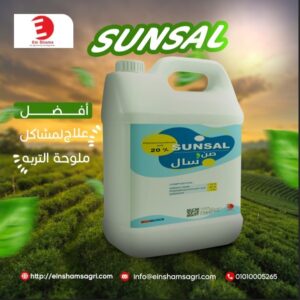
Agricultural programs
Seedling death disease
Pathogen
Rhizoctonia
Fusarium sp
Symptoms
• The shoots turn yellow and then turn pale yellow. Then, as the infection progresses, the infected plants stop growing and then gradually die.
• When infected plants are uprooted, they are easily uprooted
• When examining the roots of infected plants, it is noted that they are colored brown, then as the infection progresses, they become colored black
• The leaves of infected plants droop and turn yellow, then disappear downward in an abnormal manner
To develop a good fertilization and pest control program, please contact:
045 2636626
01010005265
White mold on onions
Symptoms
Leaves turn yellow from top to bottom and then dry
As the disease progresses, the infection spreads to neighboring leaves
As the infection spreads from the top to the base, it is easy to uproot the infected plants
When the infection becomes severe, white spots appear on the affected leaves and then turn blackTo develop a suitable control and fertilization program, please contact
045 2636626
01010005265
Downy mildew on onion crops
Purple blight
• Two cases where downy mildew is found must be followed by purple blight
Symptoms
• It appears as yellow spots, then turns to purple, then as the infection progresses, it turns to pale yellow.
• As the infestation with downy mildew increases, purple blight appears accompanying the downy mildew.
For prevention and treatment of downy mildew and purple blight, please contact:
045 2636626
01010005265
white top (onion)
This fungus infects rotten leaves saturated with water
The infection appears as yellow spots at the top and then turns white
Infected leaves droop and then bend downward, which may cause the plant to dieTo install a control program, please contact
045 2636626
01010005265
Basal rot on onions
Symptoms
• This fungus infects the root area
• As the infection intensifies, the fungus moves to the base of the leaves, causing them to decompose and die
• When infected leaves are pulled from above, they easily separate from the mother plant
• As the infection progresses, it becomes easy to remove the plant completely from the soil
To prevent this fungus, please contact:
045 2636626
01010005265
Stem disease (onion)
Symptoms
• Binary or associated with downy mildew
• When the infection with the downy mildew fungus becomes severe, the affected areas turn black
• This fungus infects seed inflorescences
• As the infection becomes severe, the inflorescence holder dies, droops down, and dies, leading to the immaturity of the seedsTo prevent this fungus, please contact
045 2636626
01010005265
Fungal diseases that affect beans:
Bean rust: a fungal disease
The most important symptoms:
• Pale circular yellow spots appear, then turn brown as the infection progresses
• As the infestation progresses, the infestation spreads to the pods, leading to a decrease in the economic quality of the crop
• The infestation increases, causing the leaves to fall, leading to the complete death of the plant
treatment
• Planting disease-resistant varieties
• Follow an appropriate agricultural cycle
• Avoid excessive nitrogen fertilization at the expense of calcium and potassium
• Treat the seeds before planting with Mega compound, 70% methyl thiphonate
• To establish a fertilization and control program, please contact:
045 2636626
01010005265
Seedling death disease and root rot caused by a fungus
• Fusarium
• Rhizoctonia
Symptoms
• Withering of the shoots, especially during the seedling stage
• The leaves turn yellow and then turn pale yellow. Then, as the infection progresses, the leaves dry out and turn brown.
• When the roots are examined, they appear brown, then as the infection progresses, the roots appear black
• The infection progresses with the complete death of the plant, and it is easy to remove the infected plant from the soil• For treatment and to develop a good control and fertilization program, please contact
045 2636626
01010005265
Powdery mildew on bean crops, causing the fungus
Symptoms on the vegetative system:
• Purple white spots (white powder) appear on the lower surface of the leaf
• These purple spots dry up and turn brown, then the affected leaves fall
• Flowers drop in infected plants, as well as new nodes
• The infestation becomes severe, plants weaken, and the infestation spreads to the pods, leading to a complete deterioration of the cropFor treatment and to follow an economic control program, please contact
045 2636626
01010005265
Downy mildew on bean crops
Fungal disease
Symptoms
• Pale yellow spots appear on the lower surface of the leaves and the edges
• As the infection becomes more severe, fungal spores penetrate the leaves to the upper surface, forming pale spots that turn dark brown over time, then dry up and die.
• As the infection becomes severe, the fungus moves to the petioles of the leaves, as well as the stems and pods, leading to crop damage and the death of the plant.For treatment, as well as a complete control program and fertilization program, please contact
045 2636626
01010005265
The most important insect diseases that affect bean crops
Mite infection
Symptoms
• Mice feed on plant sap, which leads to the leaves becoming weak and yellow
• Signs of infection appear on the lower surface of the leaves in the form of wounds, scratches, and deformities on the leaves
• As the infection becomes severe, it spreads to the upper surface of the leaves in the form of spots that range from pale yellow to dark red depending on the severity of the infection.
• The infection then spreads to the horns, causing deformities on the necks and horns, and twisting of the horns occurs in the affected area.To develop a complete control program, please contact
045 2636626
01010005265
Aphid infestation in beans caused by aphids
Symptoms
When examining plants, one notices the presence of an insect on the lower surface of a different shape (black-green).
• It causes curling of leaves and plant tops
• The appearance of honeydew and sorrel fungi
• It is possible for the plant to become infected with some viruses when the infection becomes severe
treatment
• Weed resistance
• Follow a complete control program
• Follow an appropriate fertilization program
• Planting disease-resistant varietiesTo create a suitable resistance program, please contact
045 2636626
01010005265
Whitefly infestation of beans
Symptoms
• When examining infected plants on the hands, it is noted that adult individuals appear on the face and hands
• When examining the leaves from below, it is noted that eggs are present in tunnels under the blade of the affected leaf
• Infected leaves weaken and turn pale yellow as a result of the insect feeding on plant sap
• Infection with the fly is followed by infection with the honeydew as well as the fungus Haemophilus
• Infection with a fly may be followed by infection with some viruses
• The infestation becomes severe, reaching the pods and causing crop failureTo develop an appropriate prevention program, please contact
045 2636626
01010005265
Cotton leafworm on beans
• The presence of ooze on the leaves in the form of masses containing eggs that hatch and give rise to larvae that feed ferociously on the foliage. This appears from the effects of damage as a result of the larvae feeding on the leaves.
• There are traces of dung, larvae, leaf detachment, as well as some of the larvae themselves on the plant
• As the infestation becomes severe, the larvae move to the pods, causing major damage to the crop
• These larvae may attack branches and stems, causing the plant to die completely
For treatment and a complete program, please contact:
045 2636626
01010005265




















